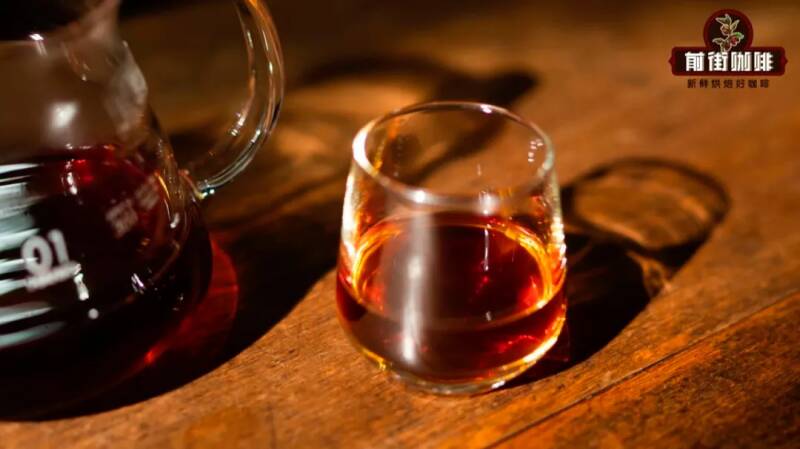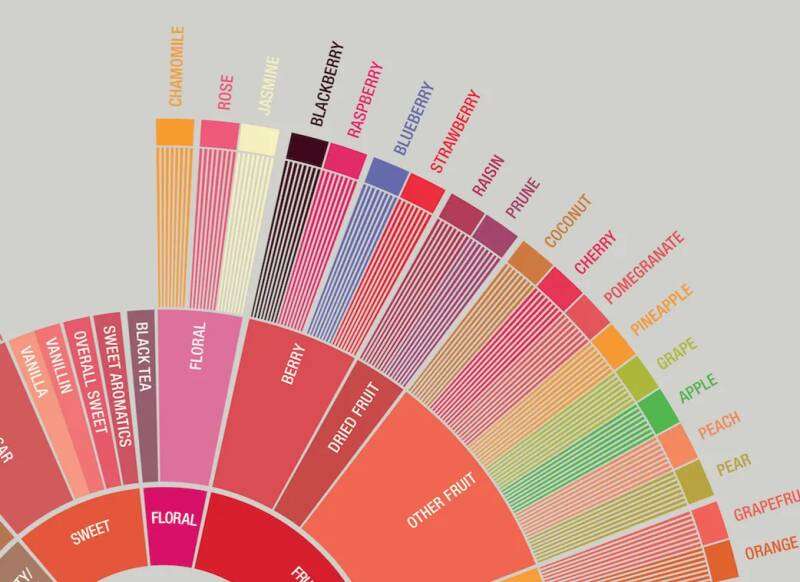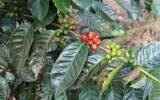Why can't you smell the flowers in your coffee? Why is there a fragrance of flowers in coffee? How to wash out the fragrance of flowers in coffee?
Whenever Qianjie brews some coffee beans with outstanding flower and fruit aroma, from the grinding stage, the smell of flowers will bear the brunt of the nose, sometimes elegant and fragrant, with sweet and sour fruit rhyme in the mouth, which makes people feel relaxed and happy after drinking.

But it is precisely because the fragrance of flowers not only means that the quality of beans is excellent, but also is often difficult to be caught alone, so it is also very precious. Everyone's sensory experience is naturally different, so many friends are curious: will there really be flowers in the coffee? If so, why can't you feel it? As coffee lovers, how can we practice identifying the fragrance of flowers?
Where does the fragrance of coffee come from?
Flower fragrance has three characteristics: sweet, light and fragrant. Mainstream studies have pointed out that the flower aroma in coffee is produced by a series of complex compounds, including terpenoids, alcohols, esters, aldehydes, lactones and so on. The key reason why we smell flowers is that these aroma compounds of coffee stimulate our senses, trigger memories of smelling flowers in the past, and come to the conclusion that there is a flower scent.
As for the formation of flower aroma, part of it depends on the variety of coffee, planting, and the degree of fermentation of post-treatment, while baking is a key link to grasp the intensity of flower aroma. From the point of view of baking alone, light to moderate baking is usually more able to retain the fragrance of flowers. So in daily life, we can give priority to shallow roasted coffee beans with flower and fruit aroma as the main tone, they often have a soft aroma and texture, it is easier to taste the existence of flowers.
What are the common types of flowers in coffee?
Friends who have known the coffee flavor wheel should know that there are three descriptions of flowers with different colors, white jasmine, pink roses and orange chamomile, which also correspond to three specific fragrance types: fragrance, fragrance and muggy fragrance.

The fragrance type represented by jasmine is the most common and the most perceptible type of flowers, which is often found in high-altitude coffee from Africa, Central America and other producing areas, among which shallow baked beans are mostly washed. It is bright and vibrant, representing flower species such as coffee, magnolia, gardenia, lemon blossom, orange blossom, marigold and so on.
The most typical fragrance is red rose, with high intensity, warm and bright tone, giving people a sense of tranquillity and soothing, representing the fragrance of violets, lavender, camellia, rose and so on. For example, the sunny emerald red standard rose summer on the front street bean list has a strong rose fragrance. Not long ago, I also drank a very rich purple lavender aroma in Alo Village, a Bansha producing area.
The muggy fragrance is quite special, it is slightly fragrant, and it is generally accompanied by the smell of lemon grass and some spices, which may be a little pungent at first, so it is highly recognizable and easy to judge, with chamomile and sweet-scented osmanthus as typical representatives. like a Colombian cherry blossom in Qianjie smelled some choking chamomile and pepper after grinding.
How to practice identifying the flavor of flowers?
In many fields, we can often see some flavors described as a particular variety of flowers with specific and distinct characteristics. But in roasted coffee beans, a variety of strong or light aromas mix together to stimulate our senses, so in most cases it is difficult to find features like real flowers, more can only take its "shape", and then find the corresponding plants / flowers in the memory bank. Therefore, when we practice flower fragrance identification, we can not prevent from the "charm and outline" of the aroma to capture the fragrance in the coffee.
When we smell the smell, the odor molecules fill the sinuses in the nasal cavity. The so-called sinuses are actually several groups of bony air-containing cavities on both sides of the nose, called frontal sinus, sphenoid sinus, ethmoid sinus and maxillary sinus respectively. We can simply understand the feeling of the forehead near the center of the eyebrow, combined with the smell of the nose, we can easily tell whether there are flowers in the coffee and which type of fragrance it belongs to.
For example, the fragrance type that we most often come into contact with, after entering the nasal cavity, will first rush to the position of the frontal sinus, and then quickly spread, because it will not gather in a certain place, so the duration is very short. The appearance of fragrant coffee often contains the soft sweetness of honey, so it can always give people the impression of tenderness.
Then comes the delicate fragrance type, which is moderately high in intensity, long-lasting and full-bodied. After entering the nasal cavity, it will rush up the frontal sinus quickly, and then converge at the back of the nose to form a rising feeling. It often appears together with the aroma of ripe fruit. It is first associated with the flower line type of dark color, stable and elegant tonality.
The last is the smelly type, compared with the first two flavors, after entering the nasal cavity, this kind of flower fragrance will first gather in the frontal sinus, and then begin to go to the top of the head. When you close your mouth and return breath, you can feel the aroma stay in the nasal cavity and the center of the eyebrow. Because the smelly smell is slightly choking and does not dissipate easily, it will feel a little pungent or dizzy at the beginning, and you will get used to it after a while.
-END-
Important Notice :
前街咖啡 FrontStreet Coffee has moved to new addredd:
FrontStreet Coffee Address: 315,Donghua East Road,GuangZhou
Tel:020 38364473
- Prev

What should Australia and White do? What is the difference between it and cappuccino and latte? What does Flat white translate?
Names such as Xiaobai, Furuibai, Chunyibai, and Ao Rui Bai are all aliases of Flat white translated in my country, but we will be more accustomed to calling him "Ao Bai". Since Australia and White was launched by Starbucks in 2015, it has become popular at an extremely exaggerated rate! Basically, every boutique cafe
- Next

Introduction to Rolani Estate, 2024 Best Panama BOP Water Wash Champion
Panama coffee has a high reputation in the global coffee market. In addition to having the well-known rose summer varieties, it is also inseparable from the Panama Specialty Coffee Association (SCAP), which designed and organized BOP (Best Of Panama). Known as the best Panama). baanah
Related
- Why does hot American coffee taste bitter? Difference in proportional concentration between hot American and ice American
- Is espresso stored overnight in the refrigerator harmful to your body? Is frozen coffee better than freshly ground coffee?
- What parameters and proportions of water temperature should be used to grind and brew fresh coffee beans? Why can't I drink freshly roasted coffee right away?
- Customers have "changed" Manner's new products! Shop assistant: Please don't mess around!
- Remove sockets in customer areas at Starbucks stores?! Netizen: I won't go if I really tear it down
- What is the difference between the taste steps of sun-dried coffee and washed coffee? Why is sun-cured coffee sweeter and washed coffee sour?
- The recipe for salty grapefruit dirty is revealed! Coffee Festival salty grapefruit dirty coffee making materials parameters ratio milk share!
- How about the flavor of Sunlight 74158 at Sidamo Banshaha Mathieu Processing Factory in Ethiopia? 74158 Share the proportion of coffee brewing parameters!
- What effect does Italian American coffee with filter paper have? Will coffee taste better if it is put on filter paper at the bottom of the powder bowl?
- What is the color difference in coffee beans? What are the characteristics of honey processed coffee beans? Why are the anaerobically treated coffee beans uneven in color?

